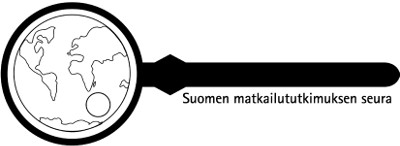Matkailututkimus on Suomen matkailututkimuksen seuran julkaisema monitieteinen matkailua, virkistystä ja vapaa-aikaa käsittelevä tiedelehti. Lehdessä julkaistaan suomen-, ruotsin- ja englanninkielisiä vertaisarvioituja artikkeleita ja katsausartikkeleita (ns. kaksoissokkoarviointi) ja puheenvuoroja (avoin vertaisarviointi) sekä vertaisarvioimattomia kirjoituksia näkökulmia- ja lektiot-osastoilla.
Vertaisarviointi
Arviointiprosessi
Arviointiprosessin aluksi päätoimittaja lukee (teemanumeroissa toimittajat lukevat) lehteen tarjotun käsikirjoituksen. Lukemisen perusteella joko käynnistetään vertaisarviointiprosessi (artikkeli- ja katsausartikkelikäsikirjoituksissa ns. kaksoissokkoarviointi, puheenvuoroissa avoin vertaisarviointi), pyydetään käsikirjoitukseen muutoksia ennen sen lähettämistä vertaisarviointiin tai hylätään käsikirjoitus. Jos käsikirjoitus ei täytä vertaisarvioidun artikkelin kriteereitä, kirjoittajalle voidaan ehdottaa sen muokkaamista puheenvuoroksi.
Käsikirjoituksen arvioi kaksi päätoimittajan/toimittajien valitsemaa aihealueen asiantuntijaa. Heidän lausuntonsa perusteella tehdään julkaisupäätös. Sekä arvioijien valitsemisessa että julkaisupäätöksen tekemisessä voidaan käyttää apuna lehden toimituskuntaa.
Päätoimittaja/toimittajat lähettää/lähettävät kirjoittajalle oman päätöksensä ja saamansa asiantuntijalausunnot. Asiantuntijalausuntoja voidaan muokata, esimerkiksi pehmentää tyyliä tai poistaa yksityiskohtia, jotka voisivat paljastaa lausunnon antajan henkilöllisyyden. Jos käsikirjoitus hyväksytään julkaistavaksi, päätökseen liitetään yhteenveto siitä, millaisia korjauksia siihen tulee ennen julkaisemista tehdä. Jos käsikirjoitusta ei hyväksytä artikkeliksi tai katsausartikkeliksi, kirjoittajalle voidaan tässäkin vaiheessa ehdottaa sen muokkaamista puheenvuoroksi.
Kirjoittajan tulee toimittaa sovittuun aikaan mennessä korjattu käsikirjoitus sekä selvitys siitä, millä tavoin tekstiä on lausuntojen pohjalta korjattu. Päätoimittaja/toimittajat arvioi(vat), onko käsikirjoitusta korjattu riittävästi. Tarvittaessa käsikirjoitus palautetaan kirjoittajalle uudelleen korjattavaksi.
Ohjeet arvioijalle
Jos asiantuntija kokee olevansa jäävi tehtävään esimerkiksi eturistiriidan tai muun syyn takia, hänen tulee kertoa tämä päätoimittajalle ja kieltäytyä tehtävästä.
Arvioitavat käsikirjoitukset ovat luottamuksellisia, eikä niitä tule näyttää ulkopuolisille.
Arvioinnista ei makseta palkkiota.
Asiantuntijalausunnon tarkoitus on
- auttaa päätoimittajaa tekemään päätös käsikirjoituksen hyväksymisestä tai hylkäämisestä
- auttaa kirjoittajaa tekstin jatkotyöstämisessä.
Arvioon tulee sisältyä vapaamuotoinen lausunto sekä suositus käsikirjoituksen hyväksymisestä tai hylkäämisestä.
Vapaamuotoinen lausunto
Lausunto tulee kirjoittaa asiallisesti ja kannustavasti. Arvioijan on hyvä miettiä, millainen palaute ja kritiikki auttaisi parhaiten häntä itseään tekstin työstämisessä.
Arvioinnissa ja lausunnon kirjoittamisessa voi käyttää apuna seuraavia kysymyksiä:
- Sopiiko käsikirjoitus aihepiiriltään julkaistavaksi Matkailututkimus-lehdessä?
- Onko teksti tärkeä omalla tutkimus- ja aihealueellaan? Tuottaako se uutta tietoa ja/tai jäsentääkö se uudella tavalla aiempia keskusteluja? Mikä on tekstin kontribuutio?
- Onko tutkimuskysymys esitetty selkeästi?
- Onko tekstissä käytetty olennaista kirjallisuutta? Tunteeko kirjoittaja aihepiirinsä kirjallisuuden? Mitkä keskeiset lähteet mahdollisesti puuttuvat käsikirjoituksesta?
- Onko keskeiset käsitteet määritelty kattavasti?
- Esitelläänkö tutkimusaineisto ja -menetelmät ymmärrettävästi ja riittävän tarkasti? Sopiiko käytetty aineisto tutkimuskysymyksiin? Onko aineiston ja menetelmien sopivuutta ja luotettavuutta pohdittu?
- Onko tutkimustulokset esitetty selkeästi ja perustellusti?
- Ovatko johtopäätökset perusteltuja? Vievätkö johtopäätökset keskustelua eteenpäin vai kerrataanko niissä jo aiemmin todettua?
- Vastaako tekstin sisältö johdannossa luvattua?
- Onko artikkelin rakenne selkeä? Miten hyvin otsikoinnit ja kappalejaot toimivat? Onko kieli selkeää ja ymmärrettävää? Onko lähdeviitteitä käytetty oikein?
- Onko käsikirjoituksessa merkittäviä sisällöllisiä, rakenteellisia tai esitystapaan liittyviä ongelmia, joihin kirjoittajan tulisi erityisesti kiinnittää huomiota?
Arvioijan tulee ilmoittaa, jos hän havaitsee tai epäilee tekstissä plagiarismia tai lähdemerkintöjen puutteellisuutta.
Arvioija voi halutessaan toimittaa lausunnon lisäksi käsikirjoituksesta version, johon hän on merkinnyt yksityiskohtaisempia kommentteja ja ohjeita kirjoittajalle.
Suositus käsikirjoituksen hyväksymisestä tai hylkäämisestä
Arvioija tulee liittää arvioon suosituksensa käsikirjoituksen hyväksymistä tai hylkäämisestä:
1) julkaistavissa sellaisenaan
2) julkaistavissa (pienin) korjauksin
3) julkaistavissa huomattavin korjauksin
4) hylättävä






